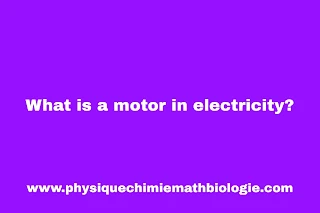What is a motor in electricity?
A motor is a device that converts electrical energy into mechanical energy. It plays a crucial role in various applications, from powering household appliances to driving industrial machinery. The fundamental principle behind a motor's operation is electromagnetic induction, a concept first discovered by Michael Faraday in the 19th century.
At its core, a motor consists of a coil of wire placed in a magnetic field. When an electric current flows through this coil, it generates a magnetic force that interacts with the external magnetic field. This interaction creates a torque or rotational force, causing the motor to turn.
Motors can be broadly classified into two main types: AC (alternating current) motors and DC (direct current) motors. AC motors are commonly used in household appliances and industrial equipment, while DC motors are prevalent in applications where precise control of speed and torque is required.
In an AC motor, the direction of the electric current periodically reverses, creating an oscillating magnetic field. This changing magnetic field induces a current in the motor's coil, resulting in continuous rotation. The most common type of AC motor is the induction motor, widely used for its simplicity and reliability.
On the other hand, DC motors operate on the principle of a constant, unidirectional flow of electric current. The interaction between the magnetic field and the current in the coil produces a rotational force, leading to motor movement. DC motors are often found in applications requiring adjustable speed control, such as in electric vehicles or robotics.
Motors are essential components in everyday life, powering a myriad of devices we often take for granted. From the fan that cools our homes to the washing machine that cleans our clothes, electric motors are integral to modern living. Their efficiency, reliability, and versatility make them indispensable in numerous industries.
One key aspect of motor design is the consideration of efficiency. Engineers strive to optimize motors for maximum energy conversion, minimizing losses due to factors like friction and heat. High-efficiency motors not only contribute to energy conservation but also reduce operational costs for end-users.
Efforts to enhance motor efficiency have led to the development of advanced technologies such as brushless DC motors and permanent magnet synchronous motors. These innovations aim to improve performance, reduce maintenance needs, and contribute to a more sustainable use of electrical energy.
In addition to efficiency, the size and weight of motors are crucial factors, especially in applications where space is limited. Miniaturization of motors has become a significant focus, enabling their integration into compact devices like smartphones and wearable electronics. The development of micro-motors has opened up new possibilities in fields such as medical devices and consumer electronics.
The evolution of motor technology is also closely linked to the broader progress in electronics and control systems. Smart motors equipped with sensors and connected to intelligent control systems enable precise monitoring and adjustment of performance parameters. This connectivity facilitates the implementation of automation and the Internet of Things (IoT), paving the way for more sophisticated and interconnected applications.
In conclusion, the electric motor is a cornerstone of modern technological advancements. Its ability to convert electrical energy into mechanical work has propelled innovations across various industries, contributing to the convenience and efficiency of our daily lives. As technology continues to evolve, motors will likely undergo further refinements, making them even more integral to the future of automation and sustainable energy solutions.

